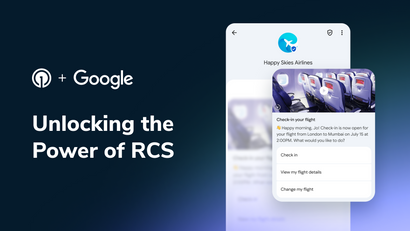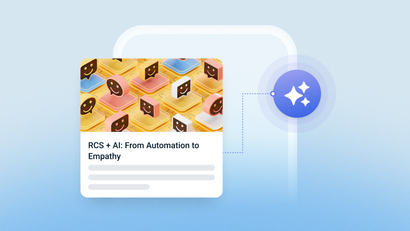Contrary to the viral hype of Spotify Wrapped screenshots and the seductive simplicity of Starbucks Rewards, mobile retention isn’t always glamorous. More often, it’s a behind-the-scenes grind.
Now more than ever, mobile marketers face increasing user distractions, fiercer competition, and higher customer expectations. Yet, amid constant innovation, the most dangerous threats to retention lurk quietly beneath the surface.
App downloads might steal the spotlight, but it’s the quieter, less flashy work of retention that truly determines whether your app thrives or fades into obscurity.
This lifecycle audit exposes the six silent killers sabotaging your mobile retention, and how to overcome them.
1. Feature overload: When more becomes less
You might think more features mean more reasons for users to stick around. Unfortunately, the opposite is often true. Excessive features overwhelm, confuse, and push users toward simpler competitors.
The trap
Marketers and developers keep adding new features, assuming quantity will drive retention. Users, meanwhile, struggle to find core value amid the clutter.
The re-alignment
Marketers: Clearly communicate the essential benefits your app delivers. Focus your messaging around core features that genuinely matter to users, highlighting simplicity and ease of use.
Consider introducing new features gradually, clearly tying each to your app's core value. Ask yourself: does this new feature directly enhance the primary reason users come to our app?
Developers: Conduct regular audits to pinpoint "ghost" features (those rarely or never used.) Streamline the app, prioritize user experience around key functions, and actively reduce complexity.
It may help to adopt a mindset focused on essentialism. Think critically about feature necessity during sprint planning. If a feature doesn't directly support a core user workflow or resolve a clear, frequently reported pain point, it's probably diluting your product. Challenge stakeholders with one question: Will users notice if we don't build this? If the answer is no, it’s time to reconsider.
2. Over-segmentation → isolation
Let’s be clear: mobile messaging personalization is crucial. It’s what transforms your app from an occasional check-in to an essential part of your user's daily life. But, believe it or not, over-segmentation is real. When you segment users too narrowly, it fragments their experience, leaving them feeling confused and disconnected rather than understood.
If users consistently encounter disjointed journeys, you're likely to see increased churn rates, shorter session durations, and lower repeat engagement.
The trap
Marketers segment users so narrowly that experiences become isolated rather than personalized.
Think about it this way. It's one thing to send tailored product recommendations based on a shopper’s established preferences, like regularly browsed categories or favorite brands. But it's a completely different (and irritating) experience to flood their notifications with hyper-specific offers triggered by a single casual click on a niche item they never truly cared about.
The first approach builds relevance; the second just breeds annoyance. It’s the difference between “hearing” someone and “listening” to someone.
The re-alignment
Marketers: Consolidate segments around meaningful lifecycle milestones rather than micro-behaviors. To identify these milestones, ask yourself: What key actions consistently indicate deeper user commitment or increased lifetime value?
Often, these are actions like fully completing onboarding sequences, making a second purchase within 30 days, creating or sharing user-generated content, subscribing to premium tiers, or regularly engaging with loyalty features.
Regularly reassess segments for retention impact, merging or dropping those that don't clearly align with these pivotal user moments.
Developers: Ensure your analytics tools surface broader user patterns rather than overly granular, niche interactions. Set up event tracking to explicitly highlight actions tied directly to retention milestones (onboarding completion, repeat engagement behaviors, significant in-app upgrades, etc.) rather than flooding marketers with every minor interaction.
Additionally, collaborate with marketing teams to regularly audit which tracked events truly influence retention. User events are your garden. Prune unnecessary event logging to reduce data noise and help marketers focus clearly on meaningful signals of user commitment.
3. Celebrating the wrong victories with misaligned metrics
We’re not here to rain on your parade, but daily active users (DAU) and open rates are superficial metrics that often distract from deeper sustained engagement, as tempting as they may be.
The trap
Teams chase short-term spikes in opens and activity, celebrating quick wins instead of cultivating genuine indicators of long-term user commitment.
The re-alignment
Marketers: Realign KPIs to focus on deeper engagement metrics—frequency of meaningful actions, habitual use patterns, user-generated content, or referrals. Build campaigns explicitly to nurture these deeper interactions.
Don’t get addicted to the “cotton candy” of success metrics. They taste so sweet in the moment, but aren’t exactly nourishing. Real victories, the kind that build long-term loyalty, are the hardy meals: substantial, fulfilling, and worth coming back for.
Developers: Implement tracking for deeper user actions beyond surface-level clicks, such as feature re-use, task completion rates, time between key behaviors, or successful goal setups. Consider building dashboards or automated reports that highlight retention-driving behaviors over time, so teams can spot patterns and adapt strategies accordingly.
4. Static journey syndrome
Lifecycle journeys aren't static roadmaps; they need constant refinement. Journeys effective today may become irrelevant tomorrow.
The trap
Teams set journeys once and rarely revisit, causing user experiences to become outdated and ineffective over time.
The re-alignment
Marketers: Schedule quarterly audits to integrate fresh behavioral insights, new features, and evolving user expectations. Prioritize ongoing testing and optimization rather than occasional tweaks.
Developers: Leverage automated journey builders that dynamically adapt based on user interactions. Ensure your engagement tools can flexibly adjust paths in real-time.
5. Over-reliance on AI
AI-driven engagement is powerful but not foolproof. At least not at the stage it’s at today. Over-automation risks losing the authentic human connection users seek.
Explore how to find the right balance of AI vs. human intuition in mobile marketing to help decide when it's time for each.
The trap
Mobile brands rely too heavily on AI, resulting in interactions that feel generic, mechanical, and emotionally distant.
The re-alignment
Marketers: Inject authentic storytelling and human creativity into automated interactions. Don’t just rely on AI to fill in blanks. Treat each touchpoint as a chance to reinforce your brand’s voice and values. Use customer anecdotes, brand personality, or playful language when appropriate.
AI can be a powerful creative partner, but it works best when used iteratively. Treat each prompt as a starting point, not a final draft. Don’t shy away from going back and forth, refining outputs, and sharpening them until they feel uniquely human and on-brand. It’s time well spent.
Developers: Ensure automation systems are designed with built-in flexibility for human input and overrides. That means enabling marketing teams to easily adjust tone, timing, and targeting logic without engineering dependency.
Invest in modular frameworks where content blocks and personalization tokens can be dynamically combined based on context. Include preview and testing tools that let marketers see exactly how a message will render across variations, so emotional nuance doesn’t get lost in automation.
6. Saying goodbye too soon (yes, even post-churn)
Treating churn as permanent loss ignores significant opportunities for re-engagement and retention.
The trap
Once a user churns, many brands abandon efforts, prematurely ending the relationship.
The re-alignment
Marketers: Instead of relying on generic win-back campaigns, focus on the context of churn. What was the last meaningful interaction before the user dropped off? Use that moment to frame your message, whether it’s unfinished onboarding, an unclaimed reward, or a feature they explored but never activated.
Tailor re-engagement not just by time-lapsed, but by intent interrupted. A personalized reminder about a dropped thread is far more compelling than a broad “We miss you!” nudge.
Developers: Embrace that same detective’s mindset. Go beyond basic churn attribution by logging the user’s “last active intent”—the final key action they took or attempted before disengaging. Was it adding an item to a cart, starting a task, or browsing a premium feature? Surface this insight in a structured, queryable way so marketers can trigger re-engagement flows based on abandoned momentum, not just elapsed time or inactivity thresholds.
From silent killers to active champions
Retention is an ongoing battle, but identifying some of these silent killers is truly half the victory. By conducting a regular lifecycle audit, you're shifting from reactive firefighting to proactive engagement management.
Is it time to partner with an engagement solution that understands the real value of long-term user relationship-building?
OneSignal is built to help both marketers and developers work in sync—offering powerful, real-time personalization across push, in-app, email, text, and live notifications. With flexible APIs, no-code tools, and data-driven automation, it's everything you need to transform insights into retention that scales.
Get Started for Free



